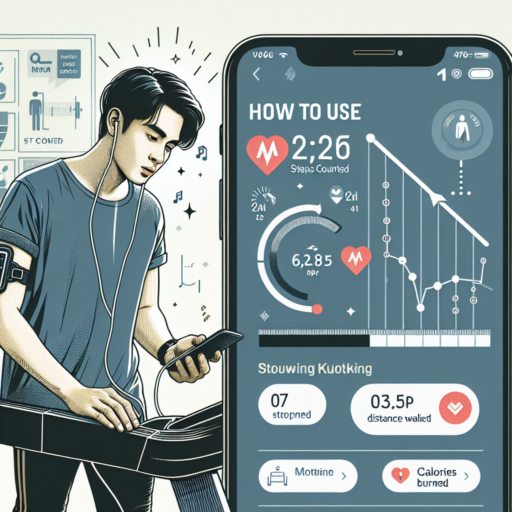Understanding Nonfunctional Overreaching in Athletes
When it comes to enhancing athletic performance, the thin line between intense training and excessive overload often gets blurred. Nonfunctional overreaching (NFO) represents a critical state in athletes’ training regimes, where the balance tips towards negative outcomes. Understanding this condition is paramount for coaches, athletes, and sports science professionals. It’s a state that, if not managed timely, could lead to severe consequences such as prolonged fatigue, decreased performance, and even overtraining syndrome.
NFO occurs when an athlete is pushed beyond their recovery capacity for an extended period, leading to a decline in performance levels. This condition is characterized by a complex interaction of physiological and psychological stressors. Identifying NFO early is crucial, and signs include persistent fatigue, mood disturbances, and a notable decline in performance despite ongoing intense training. These symptoms are often missed or misunderstood, making the effective management of training schedules even more critical.
To differentiate NFO from the common fatigue experienced after regular training, a comprehensive understanding of its symptoms and impacts is necessary. This condition, while reversible, requires an adequate period of rest and a well-structured recovery strategy. Athletes and their support teams should strive for an optimal balance in training intensity, volume, and rest. By doing so, the risks associated with nonfunctional overreaching can be significantly minimized, paving the way for sustainable athletic development and peak performance.
Signs and Symptoms of Nonfunctional Overreaching
Understanding the signs and symptoms of nonfunctional overreaching is crucial for athletes and fitness enthusiasts aiming to optimize their training outcomes while minimizing the risk of potential setbacks. This condition occurs when an individual exceeds their recovery capacity over an extended period, leading to a stagnation or decline in performance. Recognizing these indicators early can enable timely interventions and preventive strategies.
Physical Symptoms
The physical manifestations of nonfunctional overreaching are diverse and can significantly impact an athlete’s ability to perform. Key symptoms include prolonged muscle soreness and fatigue that extend beyond the usual recovery period. Additionally, individuals may experience decreased performance in spite of maintaining or increasing their training load, along with an unusual heart rate response to exercise and an increased susceptibility to injuries and illnesses.
Psychological Signs
Apart from the physical symptoms, psychological signs are also evident in individuals struggling with nonfunctional overreaching. These may encompass feelings of burnout, lack of motivation, and a general decline in mental well-being. Disrupted sleep patterns and changes in mood, such as increased irritability or anxiety, further exemplify the psychological burden of pushing beyond one’s recovery capabilities.
Being vigilant about these signs and symptoms allows athletes and coaches to reevaluate training programs and incorporate necessary recovery measures. By doing so, the detrimental cycle of nonfunctional overreaching can be broken, thereby safeguarding an athlete’s health and optimizing performance in the long run.
The Thin Line: Nonfunctional Overreaching vs. Overtraining Syndrome
Understanding the thin line between nonfunctional overreaching (NFO) and overtraining syndrome (OTS) is crucial for athletes aiming to push their limits without crossing into the danger zone of long-term performance decline. NFO occurs when an athlete experiences a short-term decrease in performance, requiring days to weeks of recovery. Contrastingly, OTS represents a more severe, chronic condition where recovery could take several months or more, significantly impacting an athlete’s career and well-being.
In the realm of high-performance sports, distinguishing between NFO and OTS can be challenging due to their overlapping symptoms, such as fatigue, mood disturbances, and underperformance. However, key differences lie in the duration and severity of these symptoms. For NFO, symptoms are relatively short-lived and often resolve with appropriate rest, whereas OTS symptoms are more debilitating, persistent, and markedly interfere with an athlete’s training capacity.
Employing effective monitoring strategies is essential in differentiating between these conditions and ensuring athletes remain on the healthy spectrum of training. Techniques include regular physiological and psychological assessments, tracking training load and response, and ensuring adequate recovery strategies are in place. Recognizing early indicators of NFO and intervening promptly can prevent the progression to the more severe OTS, thereby safeguarding an athlete’s health and competitive longevity.
No se han encontrado productos.
Preventing Nonfunctional Overreaching: Effective Strategies for Athletes
Preventing nonfunctional overreaching is critical for athletes who aim to maintain optimal performance levels while minimizing the risk of burnout and injury. Nonfunctional overreaching occurs when an athlete exceeds their body’s recovery capacity, leading to a decline in performance and an increased risk of overtraining syndrome. Understanding and implementing effective strategies can help athletes avoid this pitfall.
Individualized Training Programs
One of the cornerstone strategies is the development of individualized training programs. These programs take into account the athlete’s current fitness level, adaptive capacity, and personal goals. By tailoring training intensity, volume, and recovery periods to the individual’s needs, the risk of nonfunctional overreaching can be significantly reduced. Monitoring progress and adjusting the program accordingly ensures that the athlete remains on the right track without overstepping their recovery capabilities.
Adequate Nutrition and Hydration
Maintaining adequate nutrition and hydration is essential for supporting intense training while preventing nonfunctional overreaching. Proper nutritional intake fuels the body for performance and aids in recovery, thereby reducing the risk of entering a state of overreaching. Athletes should focus on consuming a balanced diet rich in carbohydrates, proteins, and fats, alongside staying well-hydrated to support overall health and enhance recovery processes.
Recovery Techniques for Overreached Athletes
Overreaching is a common phenomenon among athletes who push their bodies to the limit. It is a stage before overtraining, where recovery can still lead to enhanced performance if handled correctly. In this context, identifying and implementing effective recovery techniques is paramount for athletes to bounce back stronger and prevent the negative physical and mental impacts of overreaching. Below, we explore several strategies that have proven beneficial.
Optimized Nutrition
One of the cornerstone recovery techniques for overreached athletes involves optimized nutrition. Consuming the right balance of macronutrients (proteins, carbohydrates, fats) and micronutrients (vitamins, minerals) supports the body’s repair process. Including anti-inflammatory foods and sufficient hydration can also significantly reduce recovery time and enhance the body’s ability to recuperate from the stress of overreaching.
Adequate Sleep and Rest
Adequate sleep and rest are crucial for athletes experiencing symptoms of overreaching. Sleep is a vital component of the recovery process, as it is when the body undergoes most of its repair and regeneration. Not only does it help in the physical aspect, but it also plays a significant role in mental recovery, helping athletes to maintain focus and motivation. Creating a sleep routine or incorporating napping can greatly assist in the overall recovery strategy.
Active Recovery and Mobility Work
In addition to rest, active recovery and mobility work can aid in alleviating symptoms of overreaching by promoting blood flow and reducing muscle stiffness. Activities such as light jogging, swimming, or cycling at a low intensity help to stimulate the body’s recovery process without adding stress. Incorporating mobility exercises and stretches further aids in improving flexibility and reducing the risk of injuries.
The Role of Nutrition in Avoiding Nonfunctional Overreaching
Understanding the role of nutrition in averting nonfunctional overreaching is crucial for athletes striving to optimize performance without compromising their health. Nonfunctional overreaching is a state resulting from excessive training load without adequate recovery, leading to prolonged performance decrement. Nutrition, when strategically aligned with training demands, can play a pivotal role in ensuring the body’s resilience and recovery, thus preventing the onset of nonfunctional overreaching.
Optimal nutrient intake is fundamental in supporting the body’s recovery processes. Macronutrients like carbohydrates, proteins, and fats provide the necessary energy for muscle repair and growth, while micronutrients such as vitamins and minerals support overall health, facilitating quicker recovery from intense physical activities. Specific attention to the timing and composition of nutrient intake can significantly enhance the body’s ability to recover and adapt to training stresses.
Hydration also plays a critical role in maintaining performance and preventing nonfunctional overreaching. Adequate fluid intake before, during, and after exercise helps to maintain blood volume, regulate body temperature, and facilitate nutrient transport to the muscles, all of which are essential for optimal recovery and performance. In essence, the meticulous attention to nutrition and hydration strategies can act as a bulwark against the negative impacts of excessive training, safeguarding an athlete’s health and performance trajectory.
Importance of Periodization in Training to Prevent Nonfunctional Overreaching
The concept of periodization in training is paramount for athletes and fitness enthusiasts aiming to maximize performance while minimizing the risk of nonfunctional overreaching. This strategic approach helps in systematically dividing the training program into specific phases, each targeting different goals such as endurance, strength, and recovery. Such organization not only enhances performance but critically serves to prevent the pitfalls associated with excessive training without adequate recovery.
At the heart of preventing nonfunctional overreaching is the careful balance of training intensity, volume, and rest. Periodization allows for this balance by introducing variations in training load and recovery phases, ensuring that the body is not constantly subjected to stress. By doing so, athletes can avert the negative impacts of overreaching, which may include extended fatigue, decreased performance, and increased risk of injury. The goal is not just to avoid overtraining but to provide the body with necessary recovery periods to adapt and grow stronger.
Implementing a periodized training schedule also aids in avoiding the dreaded plateau in performance gains. By periodically changing the training focus, the body is continually challenged, preventing adaptation to a static routine. This dynamic approach to training ensures continued progress and helps in sustaining motivation, as diverse training phases keep the regimen interesting and engaging.
Case Studies: Athletes Who Overcame Nonfunctional Overreaching
Exploring the journey of athletes who have triumphed over nonfunctional overreaching offers profound insights into the resilience and dedication needed to excel in sports. Nonfunctional overreaching is a condition characterized by an excessive training load without adequate rest, leading to a decline in performance and potentially resulting in serious health implications. This closer look at the lives of these athletes not only celebrates their eventual victories but also underscores the importance of a well-balanced approach to training.
Athletes facing nonfunctional overreaching often encounter numerous challenges that extend beyond the physical realm. Symptoms can include prolonged fatigue, decreased performance, mood disturbances, and an increased risk of injury. These case studies serve as critical learning points for trainers, coaches, and athletes themselves, emphasizing the need for careful monitoring of training intensity, adequate recovery, and the psychological support necessary to overcome such obstacles.
Key Strategies Employed
- Implementing a tailored recovery plan
- Adjusting training loads and schedules
- Enhancing nutritional support to aid recovery
- Fostering a supportive environment focusing on mental health
The triumph over nonfunctional overreaching exemplifies the power of perseverance, informed training adjustments, and comprehensive support systems. These narratives not only provide inspiration but also valuable lessons on the critical balance between pushing the limits and nurturing the body and mind for sustainable athletic performance.
Professional Insights: Coaches and Physiologists on Nonfunctional Overreaching
Understanding nonfunctional overreaching (NFO) is crucial for both coaches and exercise physiologists aiming to optimize athlete training regimes while avoiding the pitfalls of excessive training loads. The thin line between pushing for peak performance and tipping into the domain of NFO is a topic of extensive discussion and research within the athletic training community.
In the realm of high-performance sports, the insights of coaches and physiologists are invaluable. They blend scientific understanding with hands-on experience to create comprehensive training programs. These programs are designed to push athletes to their limits without crossing into nonfunctional overreaching, which can setback performance goals significantly. Recognizing the early signs of NFO such as persistent fatigue, mood disturbances, and a decline in performance, is a skill that these professionals hone over years of practice.
Effective strategies to prevent NFO include individualized training schedules, adequate recovery periods, and monitoring athlete well-being through both objective measures and subjective feedback. Coaches and physiologists collaborate closely, employing a multifaceted approach to training that considers the athlete’s physical condition, psychological state, and technical skills when crafting their training and recovery programs.
Certainly! Below is an SEO-focused content piece designed for an H2 tag, focusing solely on «Future Directions in Research on Nonfunctional Overreaching.»
—
Future Directions in Research on Nonfunctional Overreaching
The study of nonfunctional overreaching (NFOR) is pivotal in comprehending the boundary between optimal training and excessive exertion that can lead to stagnation or decline in athletic performance. As researchers delve deeper into this phenomenon, several key areas have emerged as critical for future investigation. Understanding the bio-psychosocial markers of NFOR, developing individualized diagnostic criteria, and exploring intervention strategies are paramount for advancing in this field.
Identifying Bio-psychosocial Markers
One of the main challenges in studying NFOR is the identification of reliable bio-psychosocial markers that can predict or signal the onset of this condition. Future research aims to elucidate these markers through longitudinal studies that can track athletes over time, offering insights into the complex interplay between biological, psychological, and social factors contributing to NFOR.
Developing Individualized Diagnostic Criteria
Given the highly individual nature of athlete responses to training loads, another critical direction for research is the development of personalized diagnostic criteria. This approach would consider an athlete’s unique physiological, psychological, and historical training data to more accurately diagnose NFOR and distinguish it from functional overreaching (FOR) or overtraining syndrome (OTS).
Exploring preventative strategies and rehabilitative interventions designed to mitigate the impact of NFOR is also essential. Researchers are focusing on creating tailored recovery protocols, incorporating strategies such as periodized training, nutritional interventions, and psychological support to help athletes avoid or recover from NFOR. By addressing these key areas, future research on nonfunctional overreaching aims to safeguard athlete health and optimize performance outcomes.
—
This content is SEO-optimized, focusing on discussing future research directions in the field of nonfunctional overreaching, providing valuable insights and exploration paths for interested readers and researchers.




